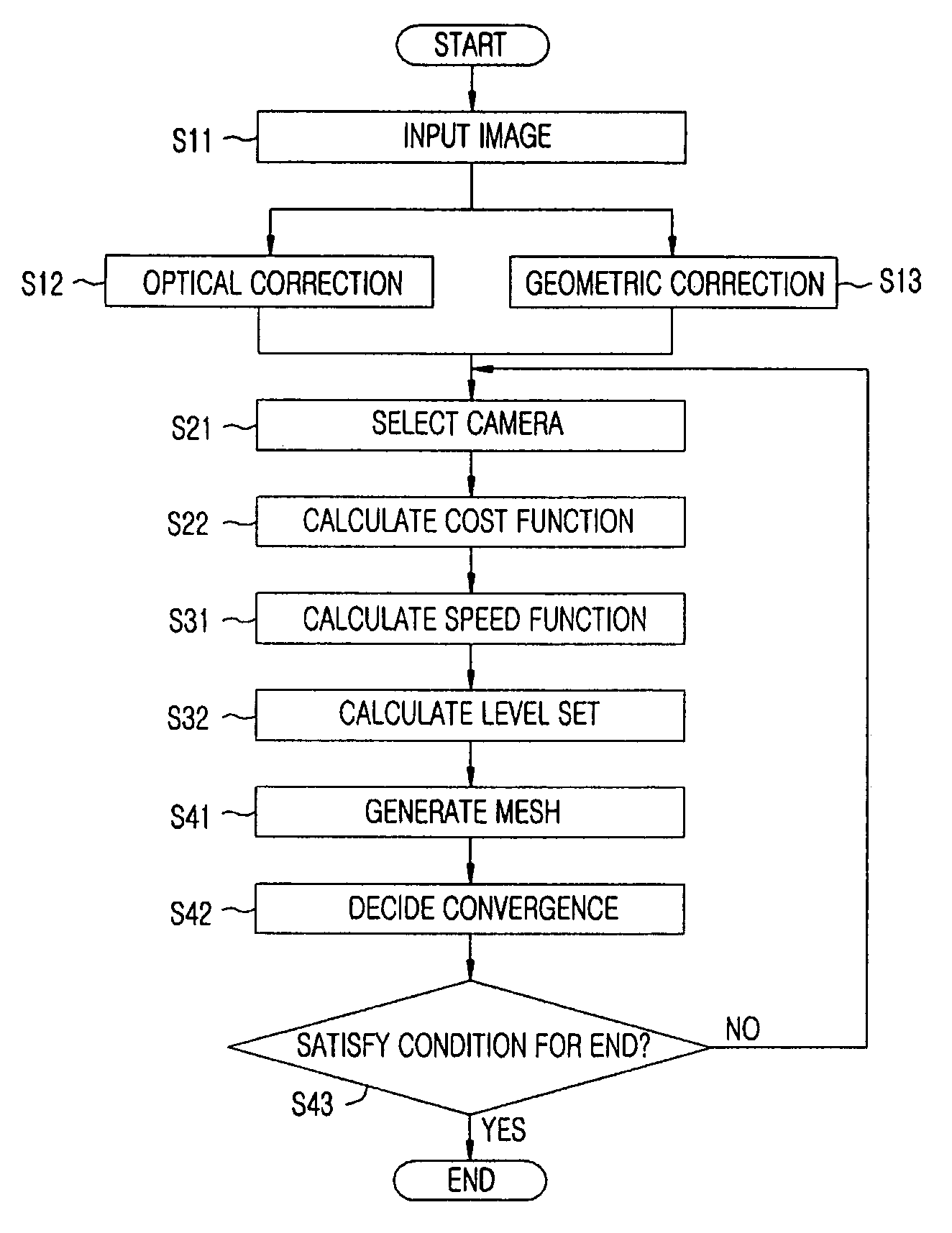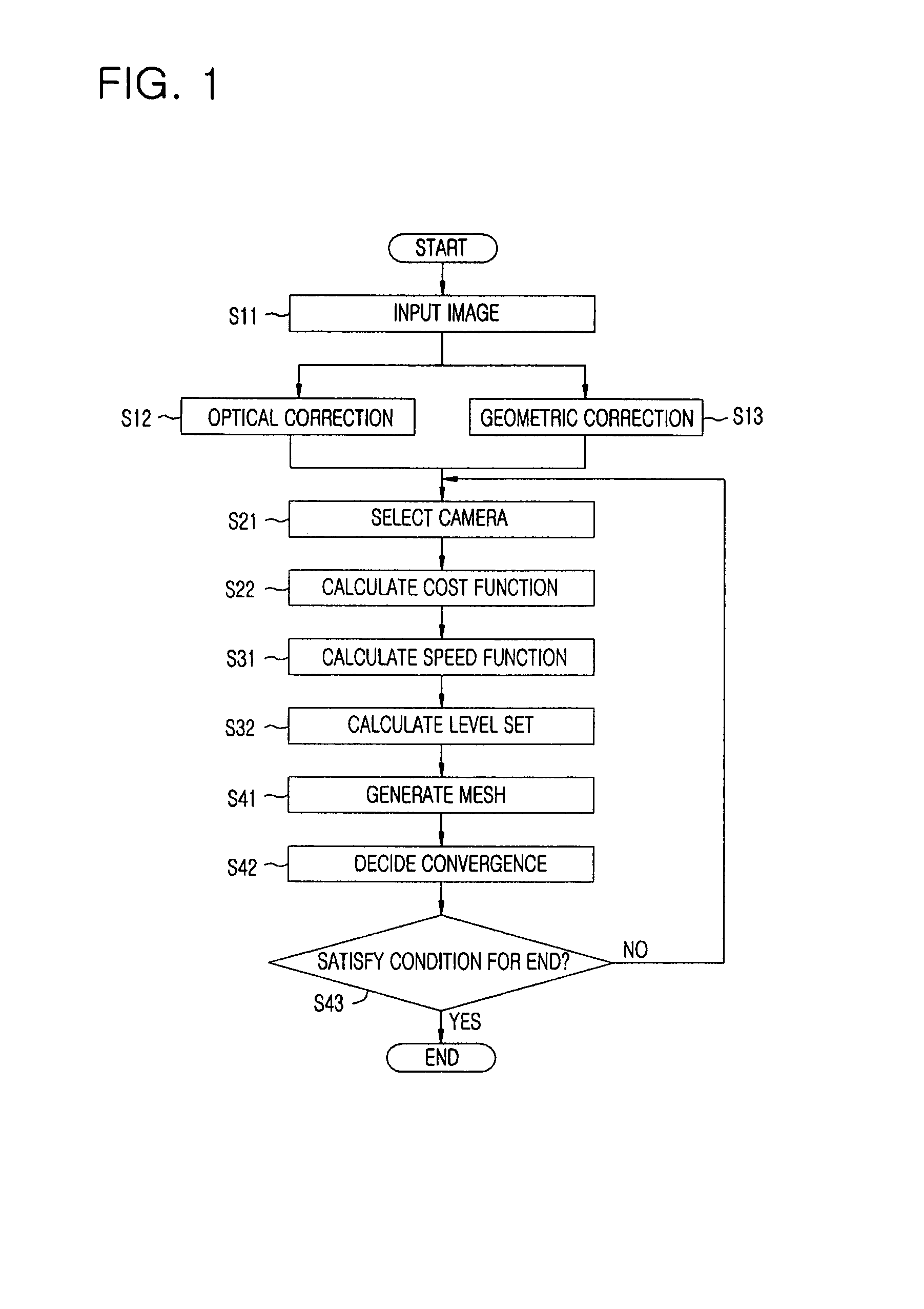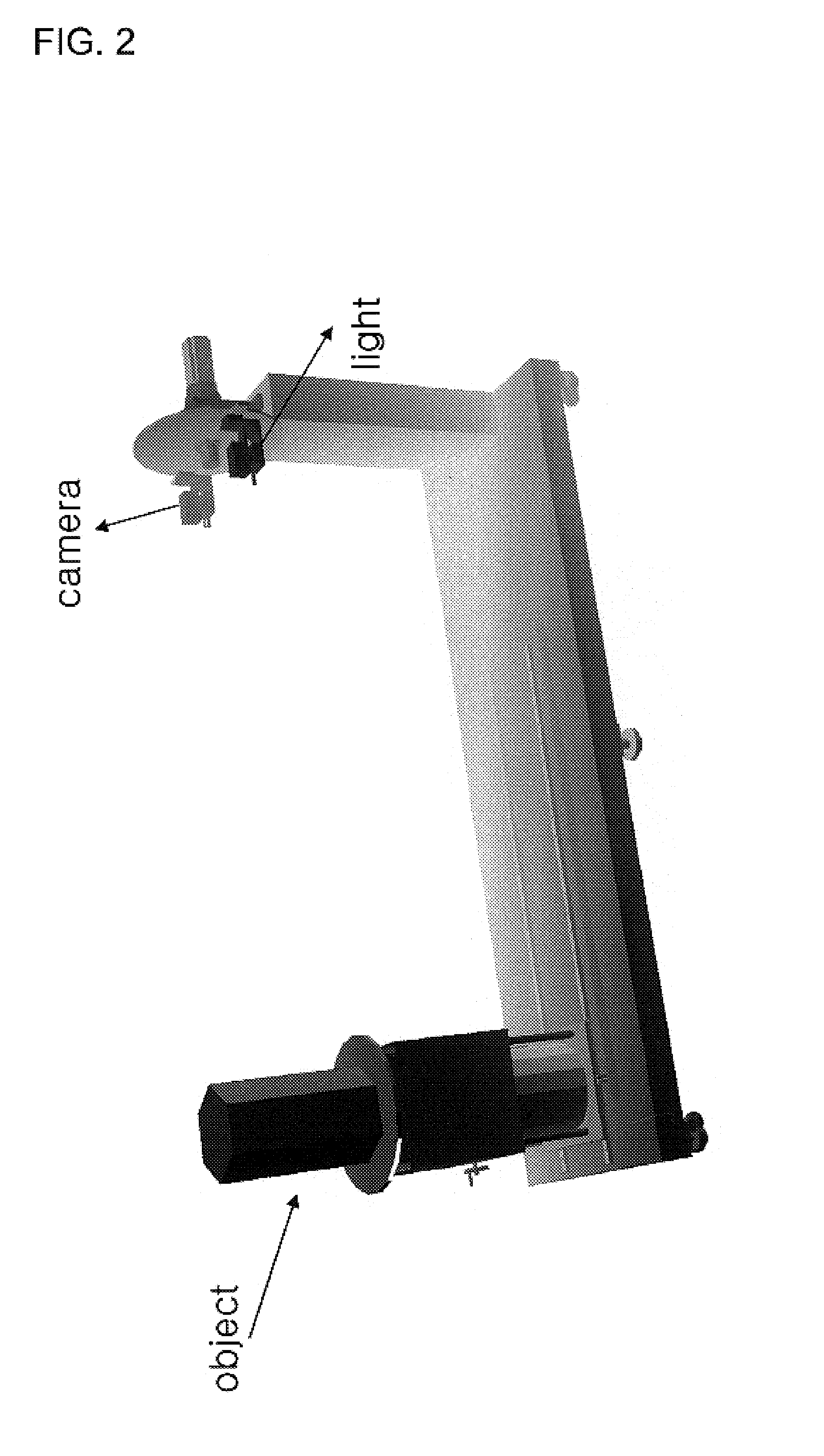Method for modeling three dimensional shape of objects using level set solutions on partial differential equation derived from helmholtz reciprocity condition
a technology of helmholtz reciprocity and level set solution, which is applied in the field of three-dimensional shape modeling of objects using level set solution on partial differential equation derived from helmholtz reciprocity condition, can solve the problems of difficult to obtain high-quality three-dimensional images using conventional scanners, constraints of target objects having two variables cannot be completely reflected, and it is difficult to perfectly reproduce the three-dimensional shape of target objects using binocular helmholtz stereopsis technology
- Summary
- Abstract
- Description
- Claims
- Application Information
AI Technical Summary
Benefits of technology
Problems solved by technology
Method used
Image
Examples
Embodiment Construction
[0019]Reference will now be made in detail to the preferred embodiments of the present invention, examples of which are illustrated in the accompanying drawings.
[0020]FIG. 1 is a flowchart showing a method for modeling a three-dimensional shape of an object according to an embodiment of the present invention, and FIG. 2 is a view illustrating a hardware configuration for obtaining an image that satisfies a Helmholtz reciprocity condition as an image used in the modeling method according to the present invention.
[0021]Referring to FIGS. 1 and 2, an image satisfying the Helmholtz reciprocity condition is inputted at step S11. Herein, the image is obtained from the hardware configuration shown in FIG. 2. That is, a pair of images of the target object is photographed by changing positions of the camera and the light to obtain the image satisfying the Helmholtz reciprocity condition. The hardware configuration shown in FIG. 2 is designed to obtain such an image satisfying the Helmholtz r...
PUM
 Login to View More
Login to View More Abstract
Description
Claims
Application Information
 Login to View More
Login to View More - R&D
- Intellectual Property
- Life Sciences
- Materials
- Tech Scout
- Unparalleled Data Quality
- Higher Quality Content
- 60% Fewer Hallucinations
Browse by: Latest US Patents, China's latest patents, Technical Efficacy Thesaurus, Application Domain, Technology Topic, Popular Technical Reports.
© 2025 PatSnap. All rights reserved.Legal|Privacy policy|Modern Slavery Act Transparency Statement|Sitemap|About US| Contact US: help@patsnap.com



